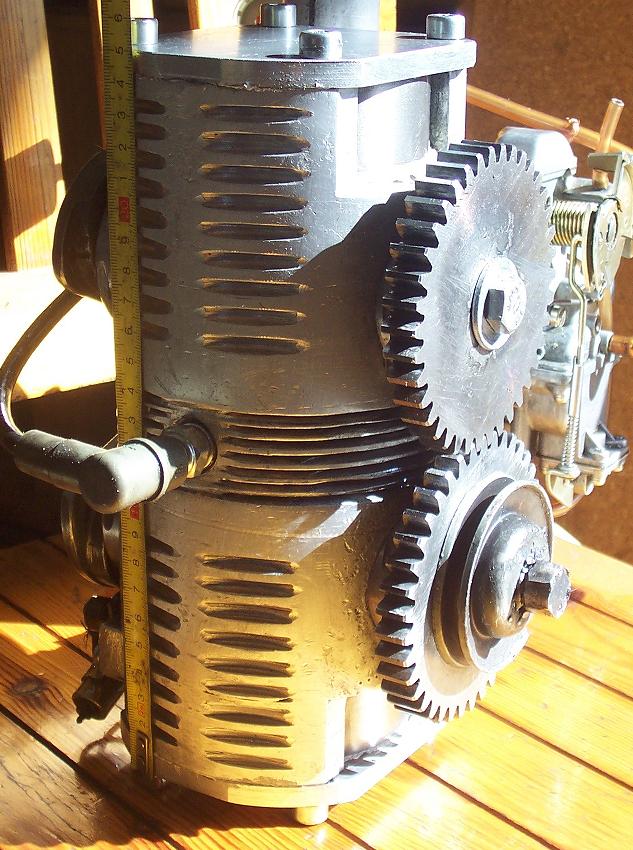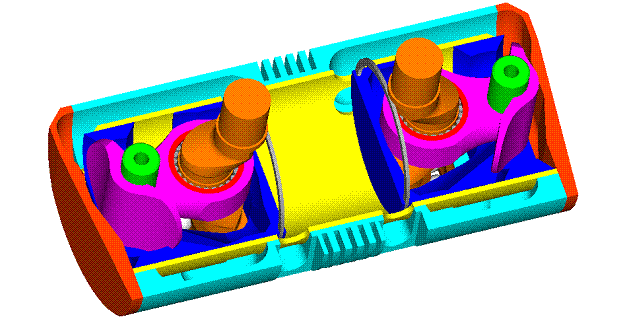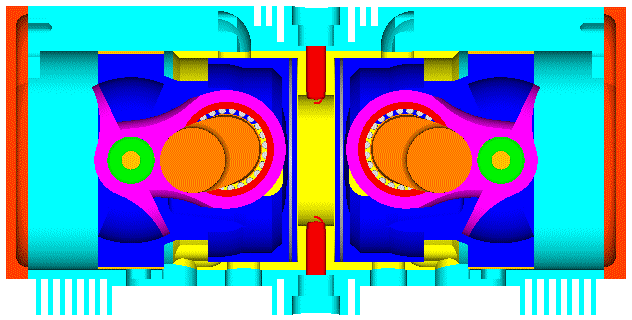J.A.W. wrote:Ah yeah, Smoker.. ..you might want to do a bit more background.. ..you risk embarrassing yourself..
R-R were required to do Crecy by the Gov't - under wartime compulsion authority, & they were permitted to relax..
..only when Whittle's turbine work showed real results.. .. nothing to do with Merlin development..
& it was much to Ricardo's frustration - & he kept going on his research units, & making real power too..
Yes, they were really 'pushing the envelope' engineering-wise, but the Crecy concept was sound..
..current ECM/injector tech/metallurgy/tribology could cope.. ..no question..
All `40s hi-po piston aero-engines featured supercharging, & if high altitude performance was wanted, then
multiple stages were also necessary.. ..most of the USAAF aircraft flying over Germany were turbo'd..
These turbos provided altitude pressure compensation up to ~30,000ft..
DFI crankcase breathing 2-strokes forgo the latent heat of evaporation, & want more substantial cooling
circulation circuits as a result.. ..yet even the simple units fairly recently banned from G.P. bike racing
make un-boosted ( by exotic fuels &/or forced induction) 4-strokes look lazy, &/or frenetic..
No risk of embarrasing myself JAW I only do that when I have had too many beers and I'm presently saving myself for the Xmas season. The comment I made about tinkering with Merlins was actually a joke though.
The piston overheating issue with the Crecy was never solved and no reasonable solution was ever suggested. No matter how much coolant was circulated, the heat could not be conducted through the sleeve as it was at such a high temperature itself and also the gap between sleeve and bore was additional barrier to heat. I'm pretty sure the sleeve would have had to run in a bore sleeve of similar thermal expansion to work as a seal, cast iron or steel, so even more barrier to heat .
"Each piston required 35-40 gallons of oil an hour to cool it, an impossible amount" "At one point,following a series of failures, no engines were run for a period of eight months, an extroardinary gap in a wartime program" That was from July 43 till early 44.
I remember a lot of this from when I trained as a mechanic in the army in the 70s. Was very interested in 2 strokes even then, GMs, DDs, etc and read some detailed stuff on various aero engines.
One of our instructors was an aircraft fitter during ww2 and taught those of us who were interested a lot of stuff that wasnt in the course and some of my best mates were mechanics in the Air force.. I have a 40 page article by The British Aeronautical Comitte titled British Aero engine Development during WW2 I guess those guys should know. I have to read it thru again again but mainly the the gist was that the existing 4 stroke engines were improving incrementally, jet engines were improving very rapidly and the two-stroke project was not progressing very fast at all. Resources were redirected to more promising projects. One thing in its favour was that it had surprisingly good fuel economy, but I guess that is relative to a Merlin running flat out at an AF ratio of about 12 to 1 . I used to have most of Ricardo's books but they got lost over the years.
You are right about DFI two -strokes, Rotaxes 800E cranks out 169hp, pretty sure they have water cooled crankcase. The early version had a single ring piston and so many shat themselves they had to be recalled. Later ones are better but still regarded as a fragile engine. On a carb 30hp 125 or a 50hp 250 motorcross bike the piston gets pretty hot anyway so I dont think any manufacturer is willing to be first to go DFI in case they have problems. I have some technical stuff from Honda about a 250 engine that never got built because they went 4 stroke.
55 hp@ 11500 , surprisingly it has a reasonable power curve, (Igot hold of some dyno graphs) It uses pneumatic port injection. I used to be in contact with the guy in Japan who headed up the R&D for the two-strokes and he was not very happy when they pulled the plug and sent him off to work on the new generation honda car engines.




